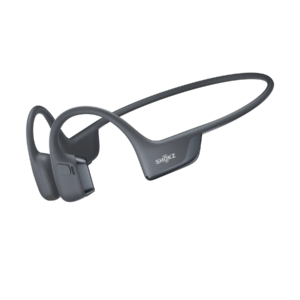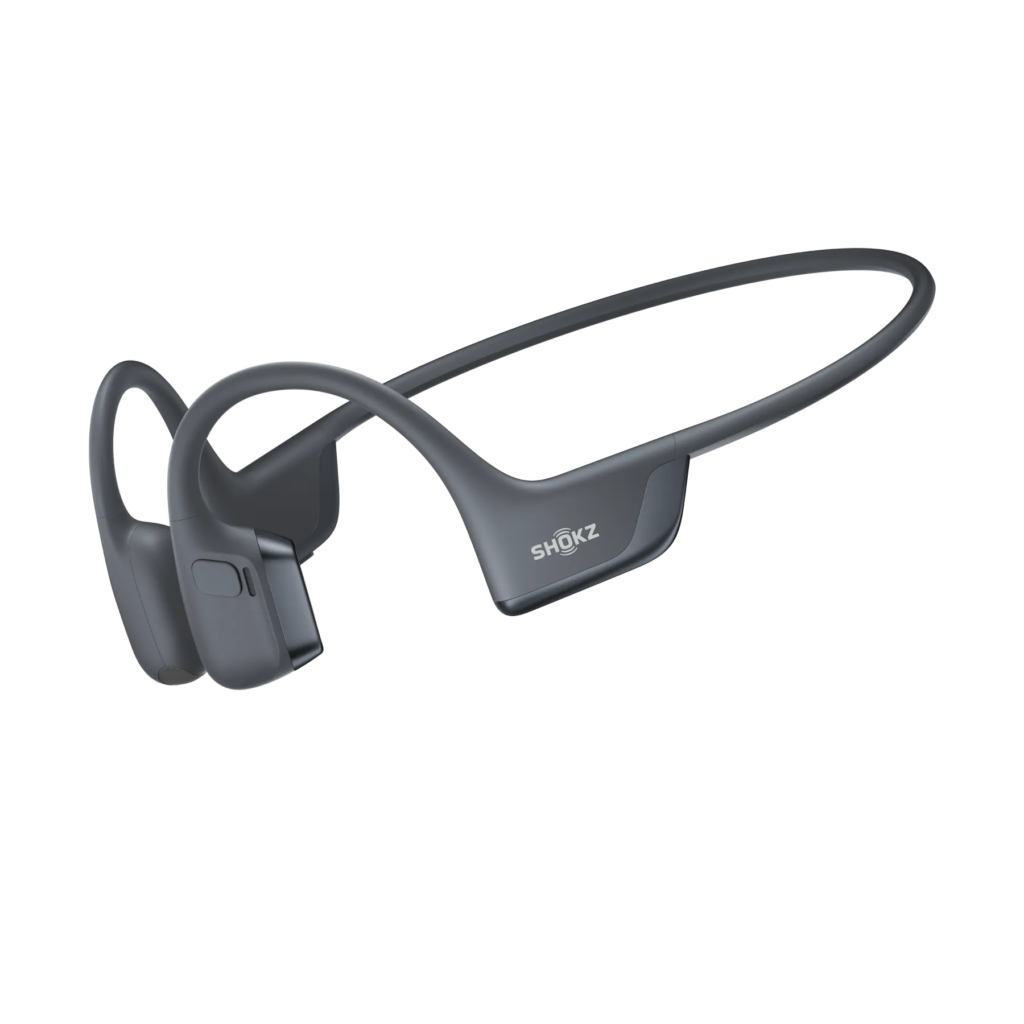
How do bone conduction headphones work? Bone conduction headphones send sound waves through the bones of your skull into your inner ear without using the eardrum.
Our ear is made up of several parts. The outer part is the bit that you can see and it is called the pinna. It is shaped to direct sound waves into the ear canal, which is the hole you can stick your earbuds in. Some people can move their pinna a little, but most can’t. Many animals can move them in an arc to get more directional hearing without having to move their heads. The sound waves travel down the ear canal until the hit the eardrum, which is a piece of very thin skin with blood vessels. The eardrum is called the tympanic membrane. The sound waves make it vibrate and those vibrations are picked up by three tiny bones called the malleus, the incus, and the stapes. These bones move with the vibrations of the eardrum and amplify the soundwaves, which they pass on to the cochlea, which is a snail shell shaped spiral that is full of fluid. The cochlea has tiny hairs all along it and the sound waves traveling through the water move these hairs. The hairs at the front part of the cochlea detect high pitch sounds, which have a higher wave frequency, and the hairs towards the end detect lower pitch sounds, which have a lower wave frequency. The hairs at the front get more contact and are more easily damaged, which is why people lose their ability to hear high-pitch sound as they get older. Each hair has microscopic projections on it and as the hairs are moved by the sound waves in the fluid, these projections bend. Every time they bend, they open up channels and chemicals flow down these channels creating an electrical signal that goes up the auditory nerve to the brain. And that is how we hear.
So, how do bone conduction headphones work? They work by sending the sound waves through your skull and bypassing the eardrum. Sound waves can be transmitted through any medium, so long as it has atoms. A sound wave is just the passing of kinetic energy from one atom to the next and the sound wave will continue for as long as there is still energy to pass. The greater the original source of energy, the further the sound wave will go. Generally, the closer the atoms are together, the faster and the further the sound will travel. That is why sound travels faster and further in water than it does in air. This doesn’t always apply. The atoms need to pass on the energy and the size of the molecules is a factor. Some materials have very large molecules and it takes a lot of energy to make them move, so the sound wave doesn’t travel very far. Bone conduction headphones work by transmitting the sound wave through the bone in your skull into the inner ear.
The bone conducting headphones usually go over the ears and the sound production part goes over the zygomatic arch. This is the top of the cheekbone, and it is a thin piece of bone that goes over the top of the jaw. If you put your fingers on your cheek near your ear and open and close your jaw, you can feel it. This bone passes over the opening of the ear, which makes it perfect for transmitting sound into the ear. The sound waves come out of the device, travel through the bone, and enter the ear, making the three tiny bones vibrate. The bones pass the vibrations onto the cochlea in the same way as with normal hearing, and you can hear sound. The difference between bone conduction headphones and regular headphones is that your ear is not blocked, and you can hear regular sounds at the same time as whatever you are listening to. This makes them much safer for outdoor sports like running, where you need to hear the traffic. You can also make calls through them because some of them have an embedded mic that picks up your voice through your bones in the same way.
Bone conduction headphones are excellent, but they tend to be better for things like podcasts and phone calls than they are for music. This has nothing to do with the device and everything to do with our brains. We have evolved the ability to pick out the sounds of speech from a crowded environment. Being able to hear speech over background sounds was a very important skill when we were hunting and is still important. If you are hearing background noises as well as your music, it might blend in, but if you are hearing background noises and a podcast, your brain will probably find it easier to isolate the voice. A very useful skill. And this is what I learned today.
Try these:
Sources
https://www.nidcd.nih.gov/health/how-do-we-hear
https://my.clevelandclinic.org/health/body/24048-ear
https://www.philips.co.uk/c-e/so/sound-hub/what-are-bone-conduction-headphones
https://uk.shokz.com/blogs/news/how-does-bone-conduction-headphones-work
Image https://shokz.com/


Pingback: Why do your ears hurt on a plane?